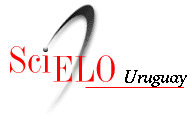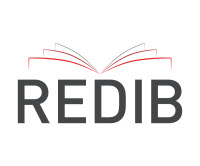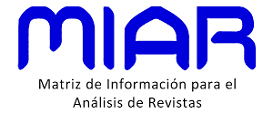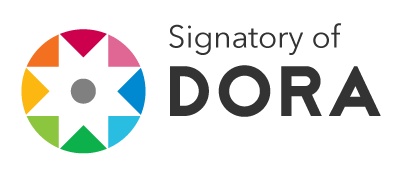La contribución de los iconos al valor informativo de los símbolos y otras representaciones
Resumen
Peirce distingue entre información que los símbolos implican e información que los símbolos transmiten. Todos los símbolos implican información, pero sólo los símbolos proposicionales (dicentes) pueden transmitir información. La información que implica un símbolo es el conocimiento acumulado en él menos el significado contenido en su definición. La información que transmite un símbolo es el nuevo conocimiento que un intérprete deriva de él en forma de proposiciones de las cuales es sujeto o predicado. Sólo los símbolos, no los iconos o índices, implican información. Según la primera teoría de Peirce (1865-68), la información es el producto de las cantidades de significación y denotación de un símbolo. La teoría semiótica posterior de Peirce reinterpreta la información como resultado de la interacción entre iconos, índices y símbolos. La denotación se reconsidera en términos de indexicalidad, la significación en términos de iconicidad. Ni los símbolos ni los iconos o índices pueden transmitir información por sí solos. Los sujetos de las oraciones se reinterpretan como portadores de índices y los predicados como información icónica. Los iconos a través de los cuales los símbolos transmiten información son imágenes mentales, que son interpretantes del símbolo. El artículo examina por qué Peirce atribuye a los iconos un «poder excitante de sueños» y por qué las cualidades que ellos significan son de alguna manera «de la naturaleza de una conciencia dormida».
Descargas
Citas
Bellucci, Francesco (2018). Peirce’s Speculative Grammar: Logic as Semiotics. London: Routledge.
De Tienne, André (2005). Information in formation: A Peircean approach. Cognitio, 6(2), 149-156.
Debrock, Guy (1996). Information and the metaphysical status of the sign. In Vincent M. Colapietro and Thomas M. Olshewsky (Eds.), Peirce’s Doctrine of Signs: Theory, Applications, and Connections (pp. 79-89). Berlin: Mouton de Gruyter.
Johansen, J. Dines (1993). Dialogic Semiosis. Bloomington, IN: Indiana University Press.
Kappner, Stephan (2004). Intensionalität aus semiotischer Sicht: Peirceanische Perspektiven. Berlin: de Gruyter.
Liszka, James J. (1996). A General Introduction to the Semeiotic of Charles S. Peirce. Bloomington, IN: Indiana University Press.
Nöth, Winfried (2009). On the instrumentality and semiotic agency of signs, tools, and intelligent machines. Cybernetics & Human Knowing, 16(3-4), 11-36.
Nöth, Winfried (2012). Charles S. Peirce’s theory of information: A theory of the growth of symbols and of knowledge. Cybernetics & Human Knowing, 19(1-2), 172-192.
Peirce, Charles S. (1931-58). Collected Papers, vols. 1-6, C. Hartshorne, P. Weiss (Eds.); vols. 7-8, A. W. Burks (Ed.). Cambridge, MA: Harvard University Press (quoted as CP).
Peirce, Charles S. ([1963-1966] 1979). The Charles S. Peirce Papers, 30 reels, 3rd microfilm edition. Cambridge, MA: The Houghton Library, Harvard University, Microreproduction Service (quoted as MS [manuscripts] in accordance with the catalogue Robin, Comp.).
Peirce, Charles S. (1982). Writings of Charles S. Peirce, vol. 1: 1857-1866. Bloomington, IN: Indiana University Press (quoted as W 1).
Peirce, Charles S. (1984). Writings of Charles S. Peirce, vol. 2: 1867-1871. Bloomington, IN: Indiana University Press (quoted as W 2).
Peirce, Charles S. (1998). The Essential Peirce. Selected Philosophical Writings, vol. 2, 1893-1913), Peirce Edition Project (Ed.). Bloomington, IN: Indiana University Press (quoted as EP 2).
Ransdell, Joseph (Comp.) 2005. Passages from Peirce, chronologically ordered, on the role of icons in predication. Arisbe Website. Available at https://www.sitehost.iu.edu/rsources/quotes/iconrole.htm. Accessed Sept. 2023.
Robin, Richard S. (Comp.). 1967. Annotated Catalogue of the Papers of Charles S. Peirce. Amherst, MA: University of Massachusetts Press.
Shannon, Claude E. and Weaver, Warren (1949). The Mathematical Theory of Communication. Urbana, IL: University of Illinois Press.
Sinclair, John (Comp.) (2008). Collins Cobuild Advanced Dictionary. Boston, MA: Heinle Cengage Learning.
Derechos de autor 2024 Winfried Nöth

Esta obra está bajo licencia internacional Creative Commons Reconocimiento 4.0.







.jpg)




















